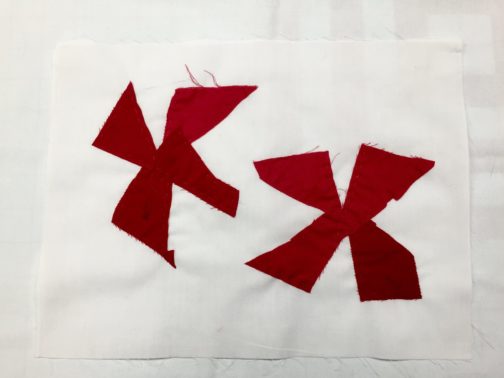Between January 1940 and August 1941, German Nazis murdered 70273 disabled people. Though they never even laid eyes on the disabled person they were evaluating, the Nazi doctors read the medical files and, if from the words on the page, the person was deemed “unfit” or an “economic burden on society”, the doctor placed a red X at the bottom of the form. Three doctors were to read each medical file, and when two of them made a red X on the page, the disabled person’s fate was sealed. Most were murdered within 1-2 hours. I am commemorating these 70,273 voiceless, powerless people who were so callously and casually murdered by gathering 70,273 blocks of white fabric (representing innocence and the paper the doctors read), each bearing two red X’s (representing one person), and I will stitch them together into quilts. It’s called The 70273 Project, and I’d love to have you join us. But first, let’s write…
Remember a disabled person you’ve known, loved, interacted with. What is/was it like to talk with them? How do/did you feel when you were with them? Do/Did they teach you anything? If so, what?
Now remember someone who’s been significant in your life who has died. How do you/will you commemorate them? How will you keep their memory alive? Why is it important to you to commemorate them?
Jeanne Hewell-Chambers is a mirthful hymnist who can’t carry a tune. She does, however, write hymns of people and places . . . stitch hymns of cloth . . . perform hymns of stories . . . and she’s the creator and founder of a big ole’ hymn called The 70273 Project that has more verses than “Just As I Am.”
Don’t forget to share your responses by commenting on the blog or using the hashtag #Cultivate16.








Oh wow! I’m blessed to have worked a lot with disabled kids. There smiles make the hard work worth it.
Fida recently posted..Revisiting the Poetry Bucket List